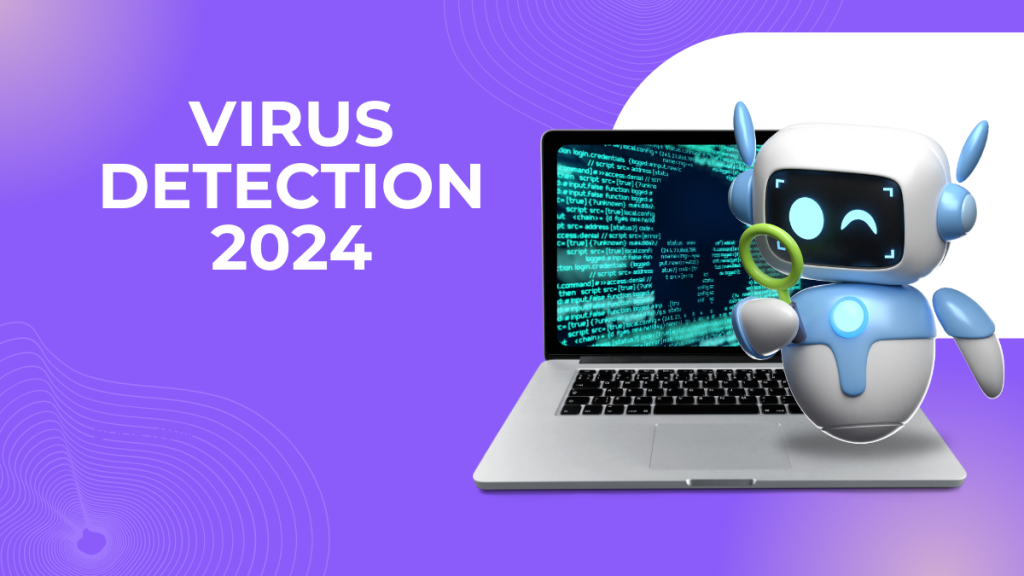Viruses and other forms of malware can cause various issues, from poor system performance to serious data breaches. In this guide, we’ll explore the signs that your computer may be infected with a virus and the steps you can take to remove it. Virus Detection 2024 We’ll also cover the different types of malware, including viruses, and explain how they can harm your device. Whether you’re a business owner, freelancer, or everyday user, understanding how to recognize and combat viruses is crucial for protecting your data and ensuring smooth device performance.
Recognizing the Signs of a Virus Infection
The first step in safeguarding your Virus Detection 2024 device and data is recognizing the symptoms of a potential virus infection. Here are some common indicators:
1. Slow Performance and System Instability
If your computer is consistently sluggish, crashes frequently, or experiences delayed responses when running programs, it could be infected with a virus. Virus Detection 2024 often consume significant system resources, leading to these performance issues. Additionally, persistent pop-up ads or unusual notifications can be a sign of infection. Avoid interacting with these pop-ups, as they may prompt you to download harmful software disguised as helpful tools.

2. Corrupted or Missing Files
Unexpected changes to files or missing data can indicate virus activity. Some viruses are designed to damage or delete critical files, Virus Detection 2024 compromising your device’s functionality and leading to potential data loss. If you notice unauthorized changes or unusual login attempts, especially if you’re not using a secure password manager, this could be a sign of a virus compromising your accounts.
3. Unusual Network Activity
If your data usage spikes unexpectedly or you notice your internet connection slowing down without a clear reason, it could be due to a Virus Detection 2024 from your device. Hackers often configure malware to run silently in the background, stealing your information. In such cases, using a virus removal tool is essential to locate and eliminate these hidden threats.
Understanding Different Types of Computer Viruses
Viruses and malware come in many forms, each posing unique threats. Here’s a quick overview of the most common types:
- Worms: These self-replicating programs spread across networks, slowing down systems and consuming bandwidth. They Virus Detection 2024 are notoriously difficult to remove without antivirus software.
- Adware: This type of malware floods your screen with unwanted ads that are hard to close, often directing you to malicious websites. Avoid interacting with these ads, as they may lead to further infections.
- Spyware: Hidden programs like keyloggers can record your activities without your knowledge. Some may even be disguised as legitimate apps, making them difficult to detect without specialized antivirus tools.
- Ransomware: This form of malware locks your files or systems, demanding payment for access. Ransomware attacks have surged recently, Virus Detection 2024 especially against businesses, making it essential to recognize early warning signs and implement strong defenses.
How to Remove a Virus from Your Computer
If you suspect your device is infected, follow these steps to remove the virus:
- Restart in Safe Mode: Booting in Safe Mode limits unnecessary processes, making it easier to isolate and remove viruses.
- Uninstall Suspicious Applications: Review Virus Detection 2024 recently installed apps and remove anything unfamiliar or suspicious.
- Run a Full System Scan: Use built-in protection like Microsoft Defender (Windows) or XProtect (Mac) to perform a comprehensive scan.
- Update Your Software: Ensure your operating system and applications are up to date to patch vulnerabilities that viruses exploit.
- Clear Browser Data: In Safe Mode, delete your browser cache, cookies, and extensions to remove potential sources of infection.
While these steps can help remove existing threats, prevention is always better. Investing in a reputable antivirus solution that offers real-time protection is the best way to keep your device secure.
Proactive Tips to Prevent Virus Infections
Here are some essential practices to keep your devices virus-free:
- Practice Safe Browsing: Stick to trusted websites and avoid clicking on suspicious links or downloading unverified files.
- Install Reliable Virus Detection 2024: Choose a security tool with real-time scanning and automatic updates to protect against evolving threats.
- Secure Your Wi-Fi Network: Use strong passwords and avoid logging into sensitive accounts when connected to public Wi-Fi.
- Use Strong, Unique Passwords: Regularly update your passwords and avoid reusing them across accounts. Consider a password manager for better security.
Final Thoughts: Staying Ahead of Cyber Threats
The digital threat landscape is constantly evolving, making it essential to stay informed and vigilant. By recognizing the signs of a Virus Detection 2024, implementing robust security practices, and using reliable antivirus tools, you can protect your data and keep your devices running smoothly. For comprehensive protection, consider a multi-layered security solution that covers all your devices, offers real-time protection, and provides additional features like browser security.
Investing in cybersecurity not only gives you peace of mind but also ensures your data remains safe from today’s increasingly sophisticated cyber threats.
Comments (0)